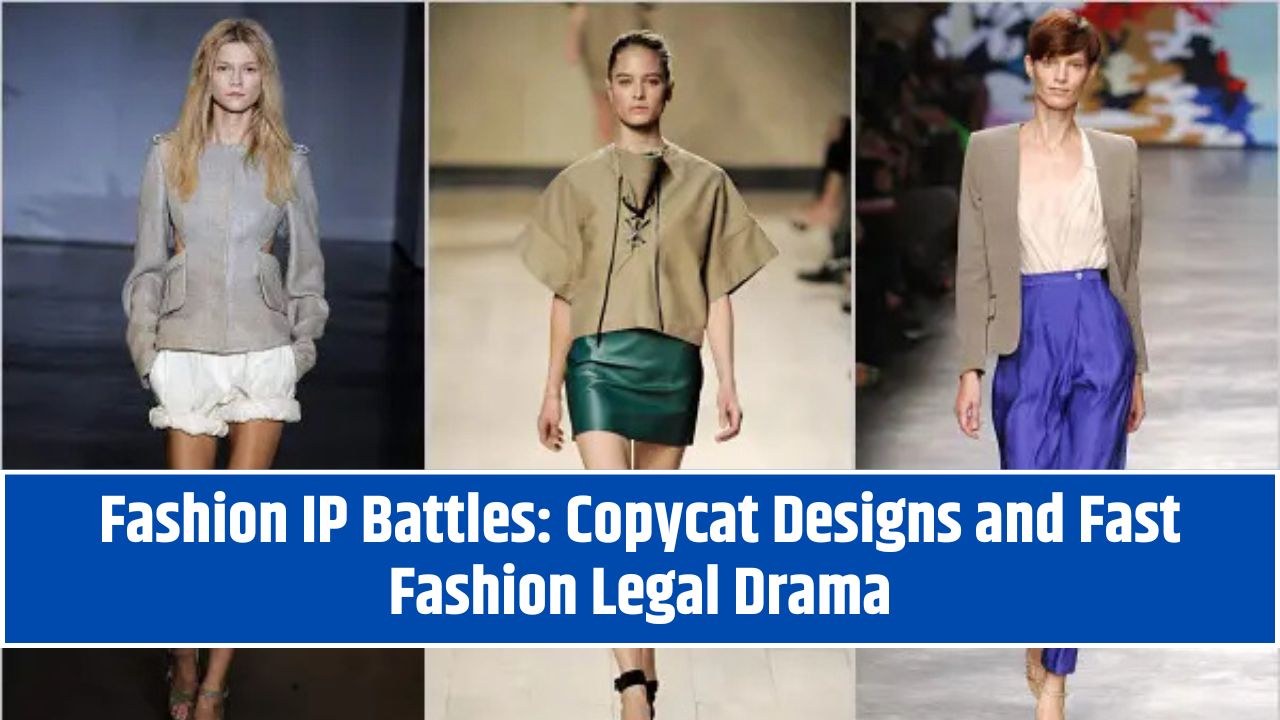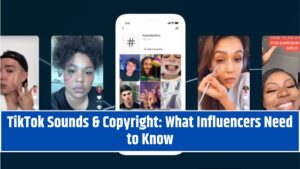“Wait… can they really get sued for that dress?”
If you’ve ever browsed fast fashion sites and thought, “This looks just like that Mugler bodysuit Beyoncé wore…” — you’re not imagining things. It’s not just déjà vu, it’s a legal minefield, and it’s exploding in 2025.
Fashion may move fast, but so do intellectual property (IP) lawyers — and the battle between original designers and copycat brands is heating up. From TikTok-fueled “dupe culture” to ultra-fast fashion giants pumping out lookalikes at warp speed, the lines between inspiration, imitation, and infringement have never been blurrier.
Let’s pull back the runway curtain and dig into the fashion IP drama that’s rewriting the rules of design, creativity, and commercial knockoffs.
The Plot: Fast Fashion vs. Original Designers
Imagine this:
- A young designer launches a capsule collection.
- Two weeks later, a nearly identical version shows up on a major fast fashion site — for 90% less.
- The designer? Devastated.
- The internet? Shrugs and buys the $19 version.
- The legal team? Filing a cease and desist as we speak.
This isn’t just annoying — it’s a multi-billion-dollar IP war.
And it’s not theoretical. It’s happening right now to brands like:
- Jacquemus
- Telfar
- The Attico
- Coperni
- Skims
- …and hundreds of indie designers just trying to protect their work.
Fashion Law 101: What’s Actually Protected?
Fashion is not like music or film — it doesn’t have automatic IP protection for every design.
Here’s what’s (typically) protected:
| IP Type | What It Covers | Examples |
|---|---|---|
| Trademark | Logos, brand names, distinctive elements | Chanel logo, red soles (Louboutin) |
| Copyright | Original prints, textile designs | Missoni zigzag, Dior Oblique print |
| Design Patents | Unique clothing shapes or patterns (must be registered) | Nike Air Max sole unit |
| Trade Dress | The “overall look & feel” of a product | Hermès Birkin bag silhouette |
But! General silhouettes, colors, or “vibes” are usually not protected.
Which is why copycats can get dangerously close — and why lawsuits are hard to win.
Recent Fashion IP Showdowns (And Spicy Outcomes)
1. Nike vs. BAPE (Again)
Case: Nike filed a 2023 lawsuit accusing BAPE of copying its Air Force 1 and Dunk Low designs.
Outcome: Settlement in early 2024; BAPE agreed to redesign key sneaker silhouettes.
Lesson: Even sneaker icons aren’t immune. Nike is famously litigious about IP — and usually wins.
2. Telfar vs. Amazon Third-Party Sellers
Case: Knockoff Telfar Shopping Bags flooded Amazon and Shein.
Outcome: Telfar issued multiple takedown notices and DMCA claims. Some listings were removed. Others popped up hours later.
Key point: Small brands can’t fight endless battles. IP enforcement is expensive — and exhausting.
3. Skims vs. PrettyLittleThing
Case: PLT released shapewear pieces nearly identical to Skims’ most popular styles.
Outcome: Skims didn’t sue — but they called it out publicly on Instagram. Fans rallied. PLT quietly pulled the line a month later.
Impact: Public shaming now works as a brand protection strategy.
4. Indie Designers vs. Shein & Temu
Case: Dozens of artists and small brands have accused Shein & Temu of design theft, often with near-exact copies.
Outcome: Ongoing class action lawsuits in the U.S. in 2024–2025 are testing the limits of fast fashion accountability.
Wild detail: One designer found her custom, hand-drawn frog print on a Shein swimsuit. She never sold it. It had only been posted on her portfolio website.
“Dupe Culture” and the Rise of Legal Gray Areas
Let’s talk TikTok.
- “Dupe hauls” are everywhere
- Creators proudly say, “This looks just like [luxury item] but it’s from AliExpress”
- Some even tag brands they’re imitating
The legal catch? Most dupes aren’t technically counterfeits. They avoid logos or slight design tweaks — just enough to stay in the legal safe zone. But ethically? It’s fuzzy.
Example: A $19 bag that’s shaped like the Bottega Jodie, but made of plastic and branded as something else. Legal? Maybe. Problematic? Definitely.
What’s Making IP Battles Worse in 2025
- AI tools can now replicate designs in minutes
- Factories in China and Vietnam use scraped photos to recreate products instantly
- Dropshipping allows for micro-knockoffs at global scale
- Brands move faster than the legal system can keep up
A fashion lawyer in New York said:
“By the time we file a cease and desist, the copied product’s already made six figures in sales.”
The Creative Toll: Why This Actually Matters
For indie designers and slow-fashion creatives, copying isn’t flattering. It’s financial theft.
They lose:
- Income
- Brand identity
- Trust from customers who can’t tell originals from dupes
- Motivation to create again
Some stop designing altogether.
How Designers Are Fighting Back
- Registering their designs early (design patents + copyrights)
- Using watermarked mockups online
- Keeping high-resolution designs off public platforms
- Building loyal communities that value ethics over price
- Partnering with legal teams or rights orgs like Fashion Law Institute
And some are turning to blockchain and NFTs for timestamped proof of originality.
What Influencers & Shoppers Should Know
If you’re promoting fashion in any way — especially as a content creator — here’s your cheat sheet:
Do:
- Research brands before doing a “dupe haul”
- Support small designers (and tag them!)
- Ask questions if something seems too similar
- Encourage transparency in collabs
Don’t:
- Use “inspired by” to excuse direct copies
- Assume big retailers are always in the right
- Profit from fake or stolen designs
- Repost stolen content without credit
Remember: The “cheap dupe” you post might cost someone their creative livelihood.
Final Thought: Fashion Imitation Isn’t Just Flattery — It’s a Legal and Ethical Minefield
The line between inspiration and imitation is thinner than ever.
And in an age where AI, TikTok, and fast fashion converge, designers must protect their work like never before — and consumers need to ask better questions.
Next time you find a “dupe,” pause and ask:
“Who created the original? And do they still get to eat?”




